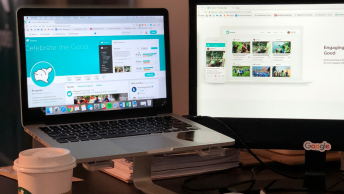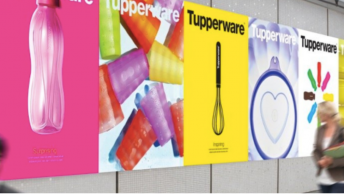DIY video production is wildly popular right now. And for good reason, it can be a cheap and effective way of gaining attention for your brand. It’s also a winning combination for a new company. But just because everyone seems to be producing video content, doesn’t mean their content is of high quality. Here are seven tips to remember to help your DIY video content rise above the noise.
1. Invest in good equipment
While it’s true many people are using their smartphones to produce video content, if you want to take your work to the next level you should invest in a high-quality DSLR camera, mirrorless camera, or camcorder.
Because everyone is using their smartphones, the picture, video and sound quality from them have become a standard. However, when someone uses a “real camera” with an external microphone, that content stands out above the rest. So while the investment is not necessary, it will help your content differentiate itself.
Watch YouTuber, Casey Neistat review the differences between Sony and Canon cameras for DIY video production.
SEE ALSO: 5 Things You Should Do Before Creating Your Next Video
2. Have a plan
Before you step in front of the camera, you should have an idea of the message you’re trying to get across. Get organized and use a white board if you have to. This is the stage where it’s OK to create a script and to map out a storyboard to guide you.
Ask yourself what you’re trying to accomplish by producing the video. Remember that video is a tool and that it can hurt your brand if you don’t take it seriously and come properly prepared.
Watch this Toronto company’s video, which highlights the importance of planning before your next DIY video production.
3. Relax and be yourself
You also don’t want to take your video content too seriously or no one will want to tune in. Being relaxed conveys confidence to your customer. This is a big deal for managing that ever so important first impression.
You don’t have to be perfect and you don’t have to memorize any script, not verbatim anyway. You just have to be human – relatable and authentic, yet professional.
Watch this short motivational video by Gary Vaynerchuck to see the difference projecting yourself as relaxed and casual makes for your DIY video production.
4. Don’t be afraid to try something new
What makes video such a popular content choice is it allows the filmmaker to convey complex information, in a short amount of time, through an entertaining medium. What makes it entertaining for the viewer is the novelty of the content.
It’s easy to take this for granted and to just do what everyone else is doing because we think it’s safe and has proven results. This is a fallacy and actually, makes your work harder.
If everyone is doing one thing, that space is already occupied and the competition is fierce. Your odds are better then, to seek out new opportunities and to cultivate a style that is uniquely yours.
5. Content is king
Your videos should be full of rich content your customers can and will actually use. Whether that content is a demonstration or a “How To” video, a list of tips, or something that inspires or makes them laugh, your DIY video production should be providing people with videos that give them more than a promotional message for your brand or product.
Check out this simple American Apparel video which shows the viewer how to change out the cord on one of their hoodies.
6. Keep it short
A 2014 MIT, edX and University of Rochester study revealed shorter videos are more likely to be watched in their entirety. Of all the factors the study considered, video length was determined to have the greatest influence on engagement.
Your audience will happily watch a one to two-minute video because it doesn’t eat up much of their time. The shorter the video, the more likely people will share the content.
Listen to Sean Michael explain the importance of short DIY videos for keeping your audience’s attention.
7. Engage
Be sure to always include calls to action at the end of your video content. This could be simply asking viewers to tell you what they thought, or asking customers to visit your web page.
Also be sure to reply to comments and questions. By engaging your audience, you break the wall of one-way communication and your videos become social. Your audience makes your brand so be sure to show genuine respect and appreciation for them by letting them know you’re listening.
Here are some more call to action examples to try in your next video:
- Sweepstakes/ Enter to win
- Voting – Having viewers vote on something they care about in a poll on your website
- Asking the viewer to watch your next video
- Asking the viewer to sign up for one of your webinars
- Filling out a short form – The trick is to keep the form short, so people don’t lose interest or feel like you’re wasting their time.
Watch Ryan Perry’s one-minute marketing video on how to add calls to action when you upload a video to Facebook.
In Conclusion:
DIY video production can be a cheap and effective way of attracting customers to your brand. Apart from being cost-effective, DIY video can communicate a brand’s authenticity and reinforce credibility.
Are you including DIY video in your content marketing strategy? What other tips can you share to improve the quality of DIY video production?











